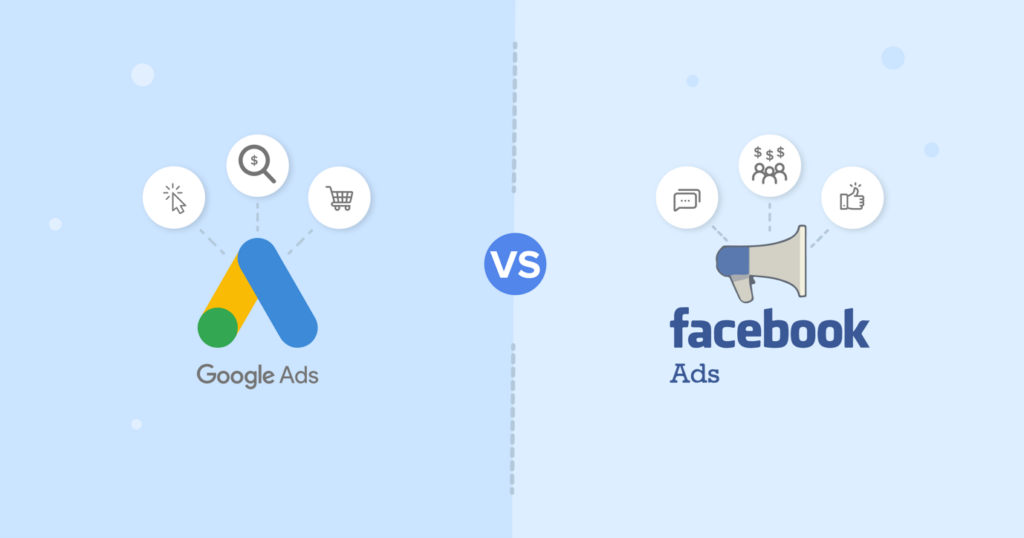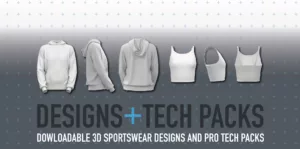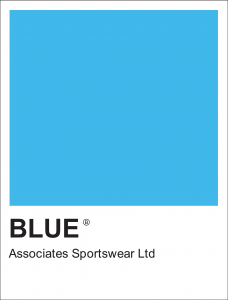
Activewear brand growth. Some simple steps?
Growing a brand takes time, effort, and strategy. Here are some simple steps you can take to help your brand grow
- Define your brand: Make sure you have a clear understanding of your brand’s values, mission, and unique selling proposition. This will help you develop a clear brand identity that resonates with your target audience.
- Identify your target audience: Understand who your ideal customer is and what their needs and preferences are. This will help you tailor your brand messaging and marketing efforts to effectively reach and engage with them.
- Develop a strong online presence: In today’s digital age, having a strong online presence is crucial for brand growth. This includes having a website that is optimized for search engines, active social media profiles, and engaging with your audience on various online platforms.
- Create valuable content: Producing high-quality content that provides value to your target audience can help build trust and establish your brand as an authority in your industry. This can include blog posts, videos, social media content, and more.
- Leverage influencer marketing: Partnering with influencers in your industry can help you reach a wider audience and build brand awareness. Identify influencers who align with your brand values and have an engaged following.
- Offer exceptional customer service: Providing excellent customer service is essential for building a loyal customer base and generating positive word-of-mouth recommendations.
- Continuously evaluate and adjust your strategy: Regularly monitoring your brand’s performance and adjusting your strategy based on data and customer feedback can help you optimize your efforts and continue to grow your brand.
Could I make my brand go viral?
Making an apparel brand go viral can be a challenging task, but here are some strategies you can consider:
- Create a unique brand identity: Ensure that your brand has a distinctive name, logo, and design that sets it apart from the competition. A memorable brand identity can help increase brand recognition and make it easier for people to share your brand with others.
- Focus on quality: Ensure that your apparel is of high quality and meets or exceeds customer expectations. This can help generate positive word-of-mouth marketing and encourage people to share your brand with their friends and family.
- Leverage social media: social media can be a powerful tool for spreading the word about your brand. Use platforms such as Instagram, TikTok, Facebook, and Twitter to share photos and videos of your apparel, customer reviews, and promotions. Encourage your customers to share their experiences with your brand on social media.
- Collaborate with influencers: Reach out to influencers and bloggers in your industry and offer them free samples of your apparel in exchange for a review or shoutout on their social media channels. This can help increase brand awareness and attract new customers.
- Host giveaways: Consider hosting giveaways on social media to generate buzz and excitement around your brand. Encourage your followers to tag their friends and share your posts for a chance to win free apparel.
- Offer personalised experiences: Provide exceptional customer service and personalized experiences to your customers. This can include handwritten thank-you notes, personalized packaging, and exclusive discounts. Satisfied customers are more likely to share their experiences with others and recommend your brand to their friends and family.
What Social Media Platforms should I use?
There are several social media platforms that you can use to promote your apparel brand. Here are some of the most popular ones:
- Instagram: Instagram is a visual platform that is perfect for showcasing your apparel brand. You can post photos and videos of your products, as well as behind-the-scenes glimpses of your brand’s story and values.
- Facebook: Facebook is one of the largest social media platforms, and it allows you to create a business page for your apparel brand. You can post photos, videos, and updates about your brand, as well as interact with your followers through comments and messages.
- Pinterest: Pinterest is a platform where users can create and share visual content, such as images and videos. It’s a great place to showcase your apparel brand’s products and style, and you can also create boards featuring your brand’s inspirations and values.
- TikTok: TikTok is a short-form video platform that has become increasingly popular in recent years. You can create fun and engaging videos featuring your apparel brand’s products, as well as behind-the-scenes glimpses of your brand’s story and values.
- Twitter: Twitter is a platform where users can post short updates, known as tweets. It’s a great place to share quick updates about your apparel brand, as well as interact with your followers through replies and retweets.
Ultimately, the best social media platform for your apparel brand will depend on your target audience and brand values. It’s important to do some research to figure out where your target audience is most active and engaged, and to create content that aligns with your brand’s values and goals.
Influencers
An influencer is a person who has a significant following on social media and could influence the opinions, behaviours, and purchasing decisions of their followers.
Influencers can be found on various social media platforms, including Instagram, YouTube, Twitter, and TikTok. They typically have a niche area of expertise or interest, such as fashion, beauty, fitness, travel, or food, and their content is focused on that niche.
Influencers are often sought after by brands for their ability to promote products or services to their followers. They may be compensated for their promotion through sponsored posts, affiliate marketing, or brand partnerships. However, it’s important for influencers to maintain transparency with their followers and disclose when they are being compensated for their promotion.
Influencer marketing has become a popular way for brands to reach their target audience and increase brand awareness. By partnering with influencers who have a similar target audience, brands can reach a wider audience and potentially increase their sales.

Brand Ambassadors
A brand ambassador is a person who represents a brand and promotes its products or services. Unlike influencers who typically have a large following on social media, brand ambassadors are often selected based on their passion and knowledge for a particular brand or industry.
Brand ambassadors may be employees of the brand or independent contractors hired specifically for this role. Their responsibilities may include attending events, creating social media content, conducting product demonstrations, and providing customer support. Brand ambassadors are often seen as a trusted source of information and can help to build brand loyalty and increase brand awareness.
Brand ambassador programs are often used by brands that are looking to build a community around their brand and products. By engaging with their customers through brand ambassadors, companies can foster a sense of connection and loyalty with their audience. Brand ambassador programs can also help to generate positive word-of-mouth and increase sales through recommendations from ambassadors.
Paid Advertising
Paid online advertising refers to the practice of paying to display promotional content or ads on digital platforms, such as search engines, social media, websites, and mobile apps. There are different types of paid online advertising, including pay-per-click (PPC), display advertising, social media advertising, and video advertising.
PPC advertising involves paying for clicks on ads that appear on search engine results pages (SERPs). Advertisers bid on specific keywords related to their products or services and pay each time someone clicks on their ad.
Display advertising involves placing banner ads, pop-ups, or other types of visual ads on websites or mobile apps. These ads can be targeted to specific demographics or interests.
Social media advertising involves paying to promote posts or ads on social media platforms, such as Facebook, Instagram, Twitter, and LinkedIn. These ads can be targeted to specific demographics, interests, or behaviours.
Video advertising involves placing video ads on platforms such as YouTube or similar streaming services. These adverts can be targeted to specific demographics, interests, or behaviours. Remember, a picture says a thousand words, so think how many words a video says!
Paid online advertising can be an effective way for businesses to reach their target audience and drive traffic to their website or landing page. It allows businesses to target their advertising to specific demographics or interests and can be tracked and measured for effectiveness. However, it’s important for businesses to carefully monitor and optimize their advertising campaigns to ensure they are getting the best possible return on investment (ROI).

Word Of Mouth – It’s FREE
Word of mouth (WOM) is a form of communication where people share their opinions, experiences, and recommendations about products, services, or brands with others through conversation, social media, or other communication channels. Word of mouth can be either positive or negative, and it can have a significant impact on consumer behaviour and brand perception.
Word of mouth marketing (WOMM) is a marketing strategy that aims to leverage the power of word of mouth to promote products or services. This can be achieved by encouraging satisfied customers to share their positive experiences with others or by using influencers to promote products to their followers. Some strategies that businesses can use to promote word of mouth include:
- Providing excellent customer service and products: When customers are satisfied with their experience, they are more likely to share positive reviews and recommendations with others.
- Offering incentives for referrals: Businesses can offer discounts, free products, or other incentives to customers who refer new business.
- Encouraging user-generated content: By encouraging customers to share photos, videos, or other content featuring their products, businesses can increase their exposure and reach new audiences.
- Engaging with social media influencers: By partnering with influencers who have a large following, businesses can reach new audiences and leverage the trust and influence of the influencer to promote their products.
Word of mouth can be a powerful marketing tool, as it allows businesses to reach new audiences and build trust through authentic and personal recommendations.

GIVEAWAYS
There are many competitions and giveaways where people can enter to win free apparel. Some of the best ones include:
- Social media giveaways: Many apparel brands run social media contests and giveaways where followers can enter to win free clothing items. These typically involve following the brand’s social media accounts, sharing a post, or tagging friends in the comments.
- Online sweepstakes: There are many websites and forums dedicated to listing free online sweepstakes, some of which offer free apparel as prizes. These can range from small giveaways to larger contests with substantial prizes.
- Product launch giveaways: When apparel brands launch new products, they often run giveaways to promote them. These giveaways can be found on the brand’s website or social media channels.
- Influencer giveaways: Influencers in the fashion industry often run giveaways where their followers can win clothing items. To enter, followers usually need to follow the influencer and the brand, like and comment on the post, and tag friends.
It’s important to note that while many of these giveaways are free to enter, some may require participants to share personal information or sign up for email newsletters. Always read the terms and conditions of the giveaway before entering to ensure that it’s legitimate and safe.
Pro Athlete Sponsorship
Professional sports athletes often receive sponsorships from brands looking to capitalise on their popularity and appeal to their fan base. Sponsorships can take many forms, including product endorsements, advertising campaigns, and event promotions.
Sponsorship agreements typically involve the athlete promoting the sponsor’s products or services in exchange for financial compensation. The athlete may be required to wear the sponsor’s logo or products, appear in commercials, or print ads, or make personal appearances at events.
Sponsorship deals can be highly lucrative for athletes, especially those who are well-known and successful. However, athletes need to be careful about the companies they choose to endorse and ensure that the sponsor’s values align with their own.
Athletes also need to be mindful of the impact that their endorsements can have on their personal brand and reputation. If a sponsor is involved in controversy or unethical practices, it can reflect poorly on the athlete who endorses them. As such, it is essential for athletes to carefully vet potential sponsors and make sure that the partnership is a good fit for both parties. This is also the same the other way around and there have been many large sporting brands that have ended their sponsorship with athletes that have cheated, tested positive for drugs or other activities that don’t align with their brand values.




